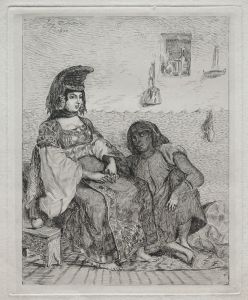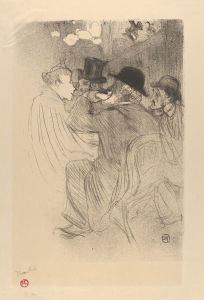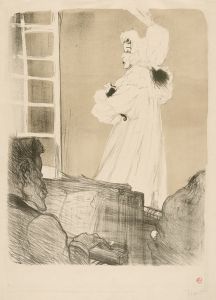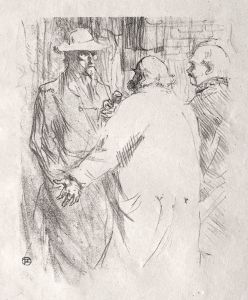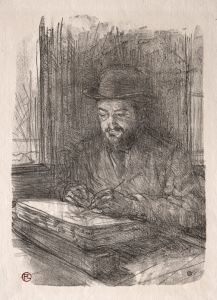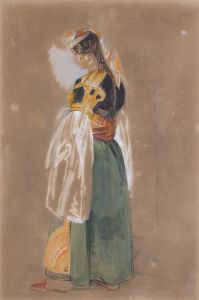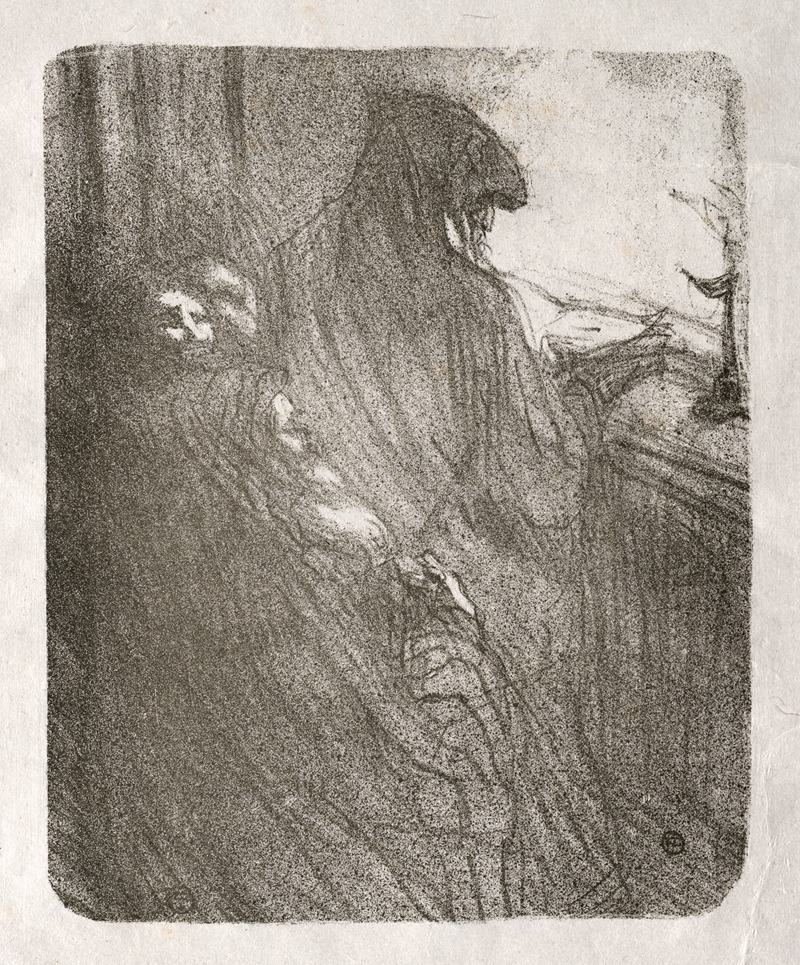
Au pied du Sinaï; La Prière des Juifs Polonais
A hand-painted replica of Henri de Toulouse-Lautrec’s masterpiece Au pied du Sinaï; La Prière des Juifs Polonais, meticulously crafted by professional artists to capture the true essence of the original. Each piece is created with museum-quality canvas and rare mineral pigments, carefully painted by experienced artists with delicate brushstrokes and rich, layered colors to perfectly recreate the texture of the original artwork. Unlike machine-printed reproductions, this hand-painted version brings the painting to life, infused with the artist’s emotions and skill in every stroke. Whether for personal collection or home decoration, it instantly elevates the artistic atmosphere of any space.
Henri de Toulouse-Lautrec, a prominent French painter, printmaker, and illustrator, is renowned for his depictions of the bohemian lifestyle in late 19th-century Paris. However, one of his lesser-known works is "Au pied du Sinaï; La Prière des Juifs Polonais" (At the Foot of Sinai; The Prayer of the Polish Jews). This painting reflects a unique aspect of his oeuvre, diverging from his typical focus on Parisian nightlife and instead exploring themes of spirituality and cultural identity.
"Au pied du Sinaï; La Prière des Juifs Polonais" is believed to have been created during a period when Toulouse-Lautrec was experimenting with different subjects and styles. The painting portrays a group of Polish Jews engaged in prayer, set against the backdrop of Mount Sinai, a site of profound religious significance in Jewish tradition. The choice of subject matter is intriguing, as it suggests an interest in Jewish culture and religious practices, which was not a common theme in Toulouse-Lautrec's body of work.
The composition of the painting is notable for its use of color and form. Toulouse-Lautrec employs a muted palette, with earthy tones dominating the scene, which may reflect the solemnity and reverence of the moment depicted. The figures are arranged in a manner that emphasizes their collective devotion, with their postures and expressions conveying a sense of spiritual introspection. The artist's characteristic style, marked by bold outlines and a focus on the human figure, is evident in the rendering of the individuals, capturing both their individuality and their unity in prayer.
While Toulouse-Lautrec is primarily associated with the vibrant and often hedonistic world of Montmartre, this painting indicates his capacity to engage with more contemplative and culturally diverse themes. It is possible that his exposure to different communities and cultures in Paris, a city known for its cosmopolitan character, influenced his decision to explore such subjects. However, specific details about the circumstances that led to the creation of this particular work remain limited.
The painting's title, "Au pied du Sinaï; La Prière des Juifs Polonais," directly references Mount Sinai, a location of immense importance in Jewish history as the site where Moses is said to have received the Ten Commandments. This connection to a foundational narrative in Judaism adds a layer of depth to the work, inviting viewers to consider the enduring significance of faith and tradition.
Despite its divergence from Toulouse-Lautrec's more famous works, "Au pied du Sinaï; La Prière des Juifs Polonais" contributes to a broader understanding of his artistic range and interests. It serves as a testament to his ability to capture the nuances of human experience, whether in the lively dance halls of Paris or in the quiet moments of religious devotion.
In summary, "Au pied du Sinaï; La Prière des Juifs Polonais" is a distinctive piece within Henri de Toulouse-Lautrec's oeuvre, highlighting his exploration of themes beyond the familiar confines of Parisian nightlife. Through its depiction of Polish Jews in prayer, the painting offers insight into the artist's engagement with cultural and spiritual subjects, showcasing his versatility and depth as an artist.






